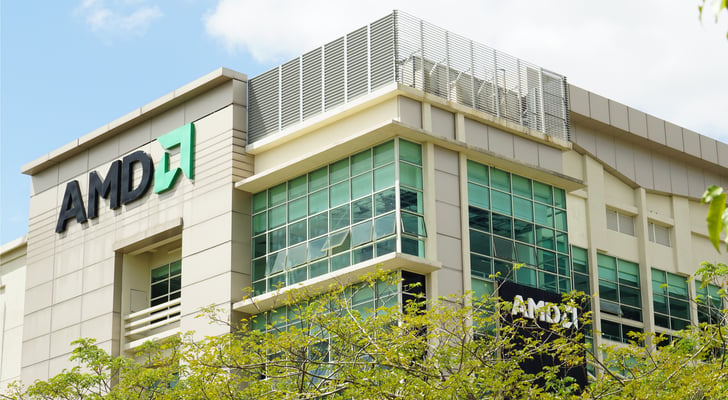Advanced Micro Devices, Inc. (NASDAQ:AMD) was off to a great start in 2018, with Advanced Micro Devices stock up almost 20% year-to-date through Jan. 8.
Then Microsoft Corporation (NASDAQ:MSFT) halted patches used to guard against the Meltdown and Spectre security threats because they were freezing PCs running with AMD chipsets.
AMD stock dropped almost 4% on the news.
The latest tech snafu puts into perspective how important a company’s capital strength is to the long-term success of its stock.
In the ninth year of the latest bull market, hysteria has taken over. Cryptocurrencies, cannabis, you name it, investors are confident their assets will grow this year.
So, perhaps the troubles currently facing Advanced Micro Devices stock as well as some of the other players, including much bigger Intel Corporation (NASDAQ:INTC), are merely blips on the radar, momentarily suspending their upward trajectory.
Perhaps, but it’s this kind of problem that had me recommending against owning Advanced Micro Devices stock throughout 2017. I just didn’t think the upside was significant enough to justify the risk.
There’s a Lesson to be Learned
Are you familiar with the First Trust Capital Strength ETF (NASDAQ:FTCS)? I hadn’t until learning more about it for an upcoming article I’ve been writing on ETFs. As ETF providers go, First Trust is one of the best.
I only mention FTCS because as I go down the list of 50 holdings, nowhere to be found is either AMD or Nvidia Corporation (NASDAQ:NVDA). Only INTC makes the cut.
To understand why Intel is considered a company whose capital strength makes it a stock worth owning, but Advanced Micro Devices stock isn’t, one need look no further than FTCS ETF’s screening criteria.
Capital Strength Is Vital
I believe that the average investor should generally stick to investing in companies that consistently make money. Intel and Nvidia’s income statements are usually in the black. AMD, on the other hand, has a much more checkered past.
By looking at the FTCS ETF’s three criteria, I think you’ll get a better idea why Advanced Micro Devices stock isn’t one of the holdings.
The ETF starts by selecting the 500 stocks in the NASDAQ US Benchmark Index with a daily trading volume of $5 million or more. That implies greater liquidity.
It then removes any of the 500 that doesn’t have $1 billion in cash and short-term investments, has long-term debt that’s more than 30% of its market cap, or has a return on equity that’s not higher than 15%. This ensures that FTCS ETF holds only financially stable companies.
From there, the remaining stocks are ranked for short- and long-term volatility. The 50 stocks exhibiting the lowest combined score get included in the ETF. Lower volatility not only reduces the potential price swings, but there is mounting evidence that low-volatility stocks often outperform their regular counterparts.
Both Nvidia and Advanced Micro Devices stock are included in the 2,786 holdings that make up the NASDAQ US Benchmark Index, but because they failed to meet all five of the above criteria, they don’t make the ultimate list.
A Quick Comparison
|
Company |
Cash Position |
LTD to Market Cap |
Return on Equity |
|
AMD |
12.0% |
-15.3% (TTM) |
|
|
NVDA |
1.5% |
44.2% (TTM) |
|
|
INTC |
13.4% |
20.7% (TTM) |
Source: Yahoo Finance, SEC
Bottom Line
When you consider the capital strength of the trio of companies, it becomes painfully obvious from AMD’s return on equity — debt and cash position are both reasonable — that AMD is outclassed and outgunned.
Of the three, I continue to believe Nvidia is the one to own for all but the biggest of speculators.
As of this writing, Will Ashworth did not hold a position in any of the aforementioned securities.

